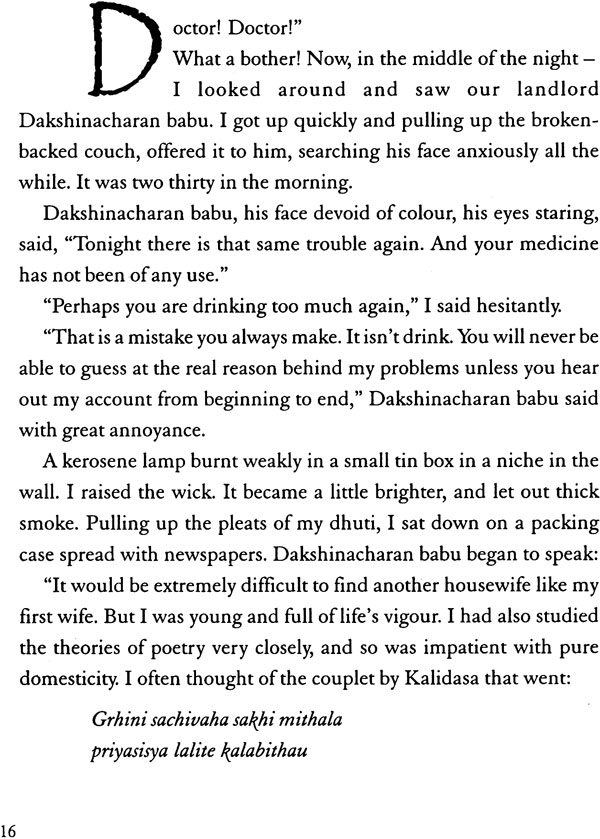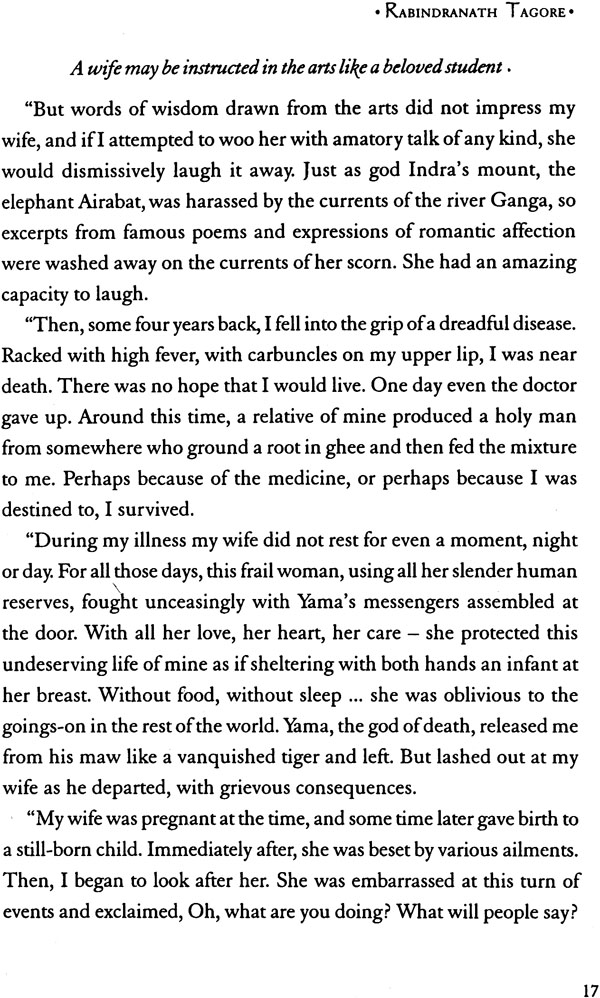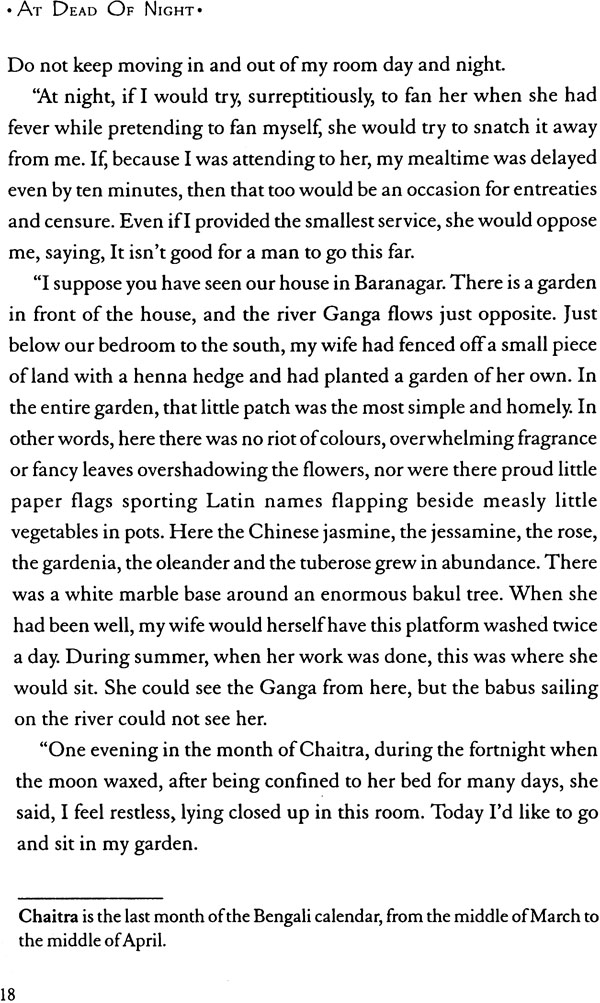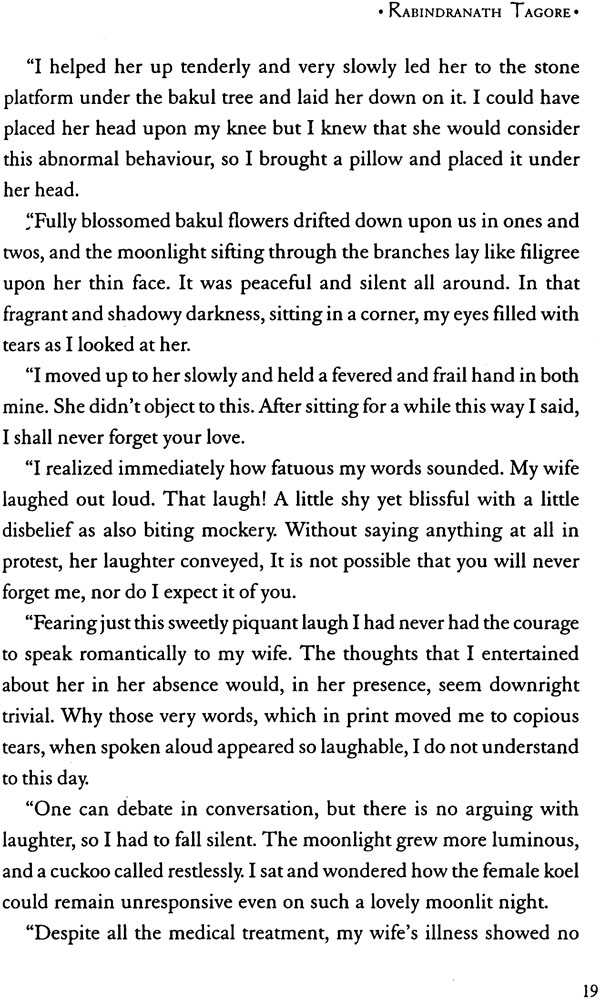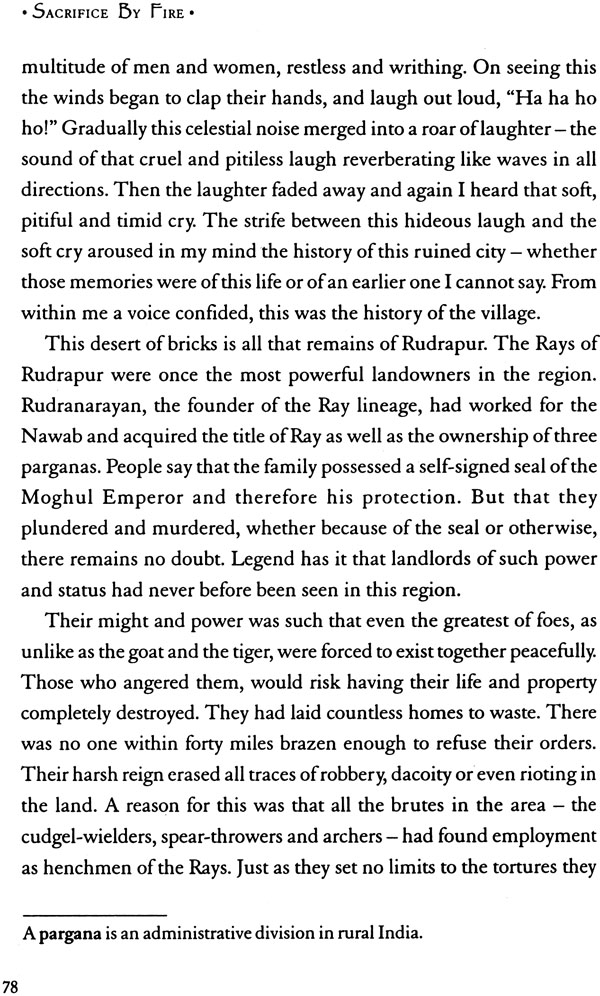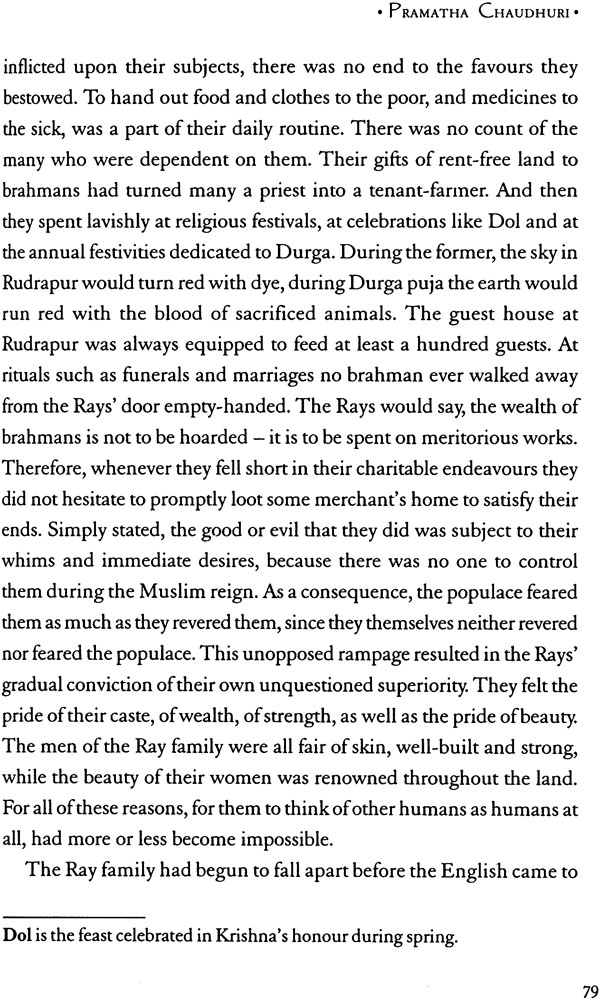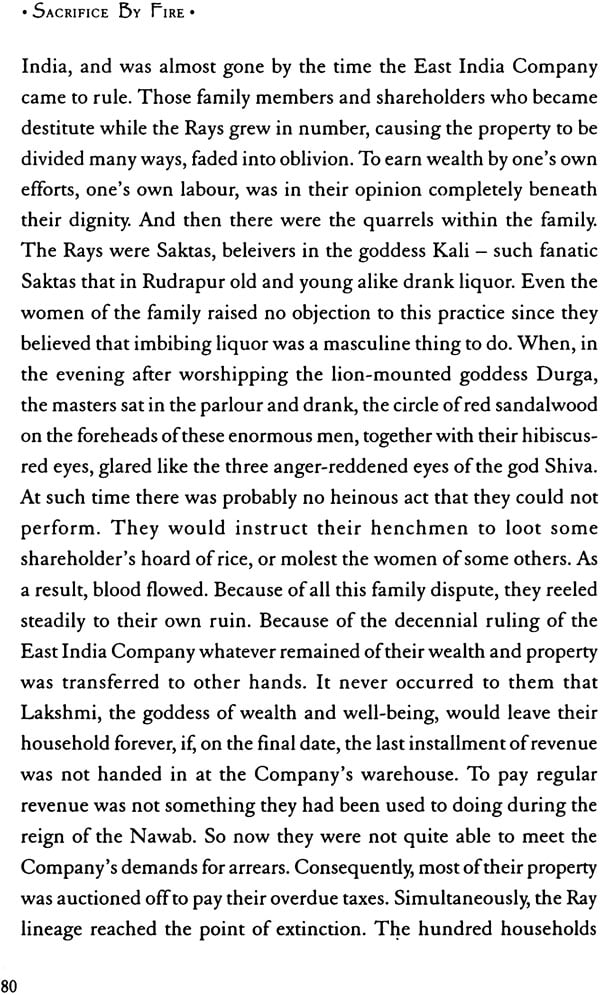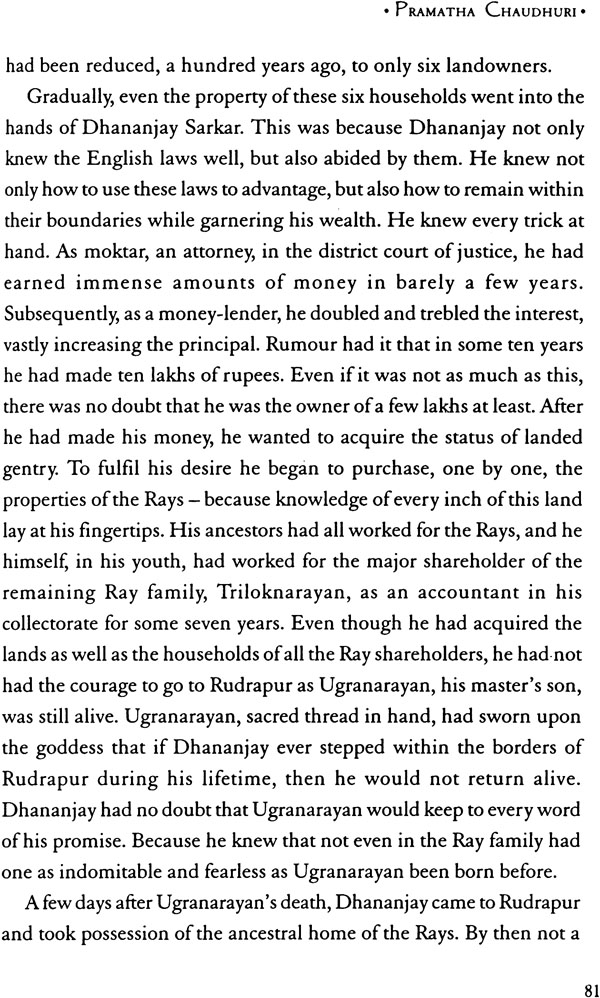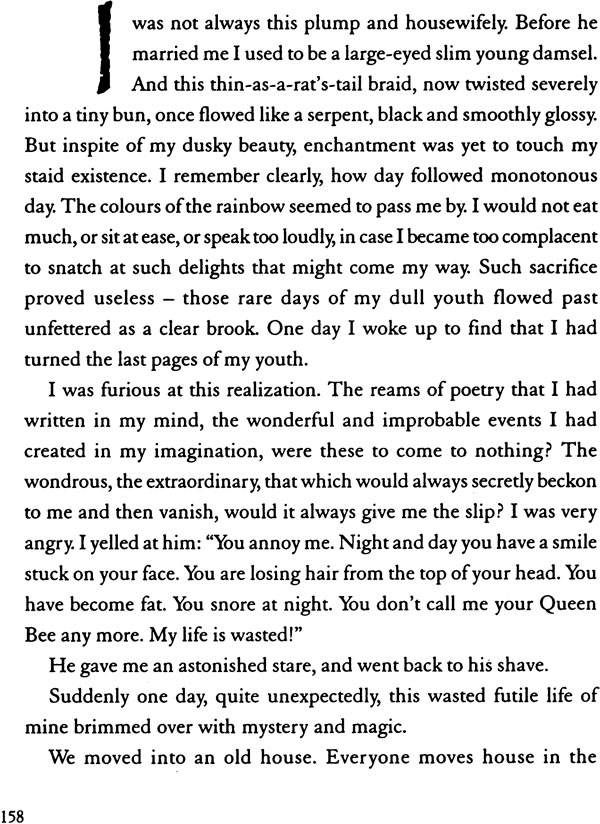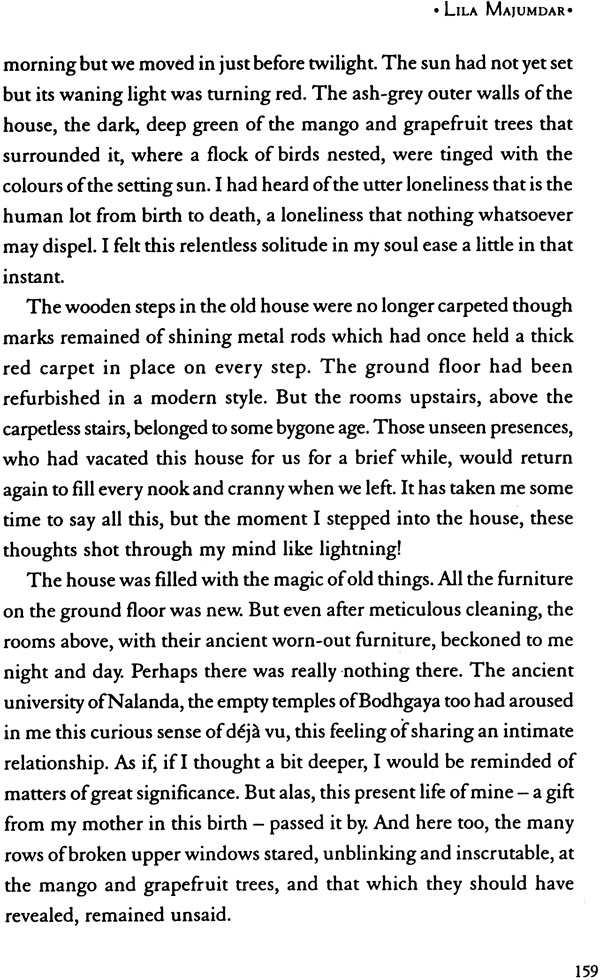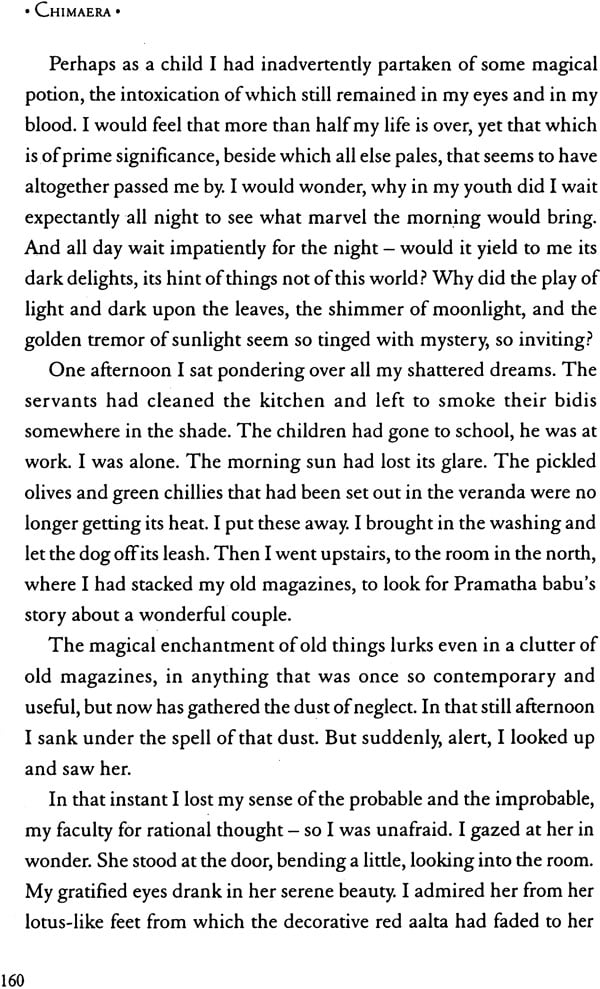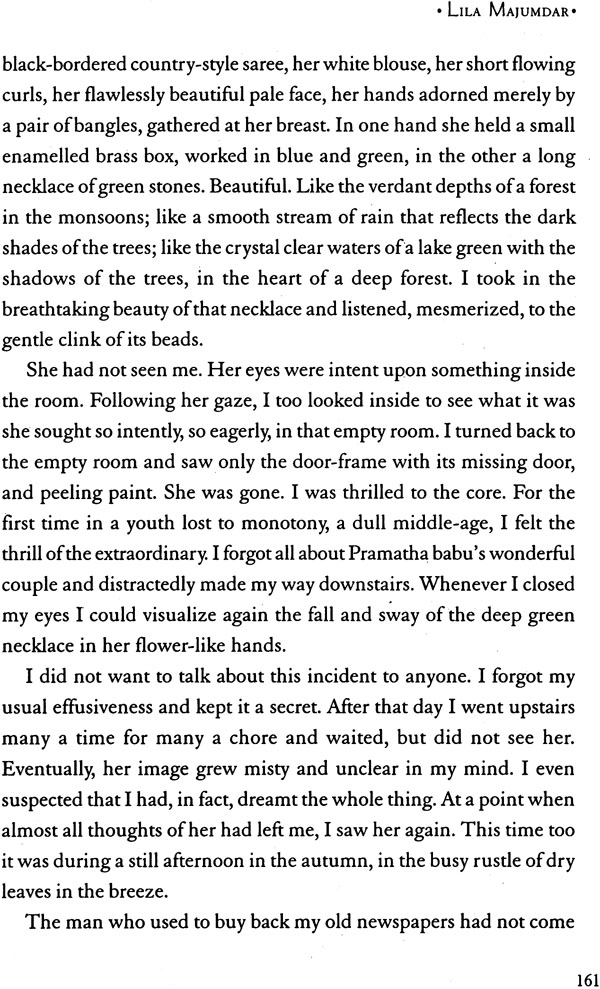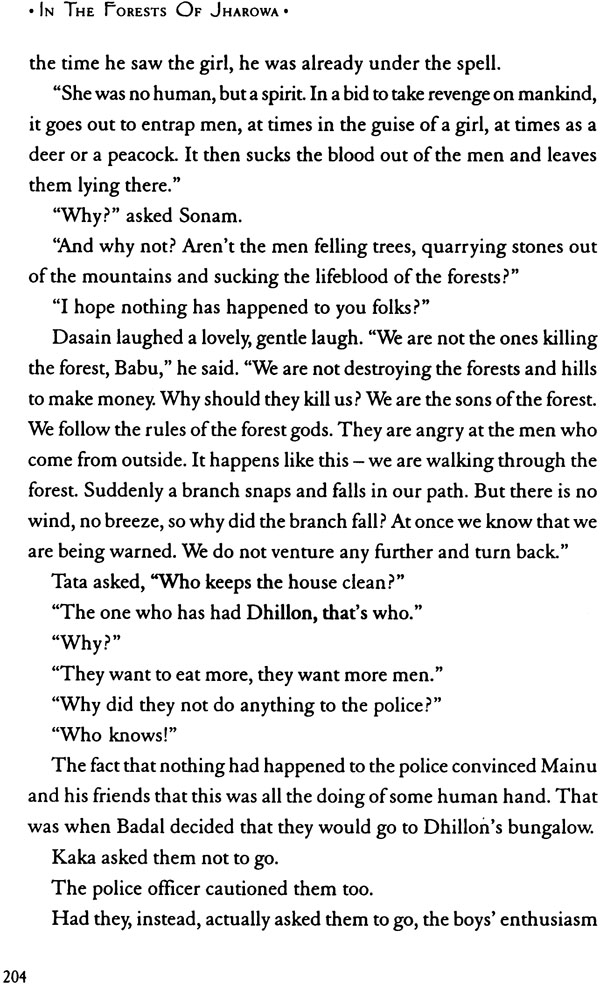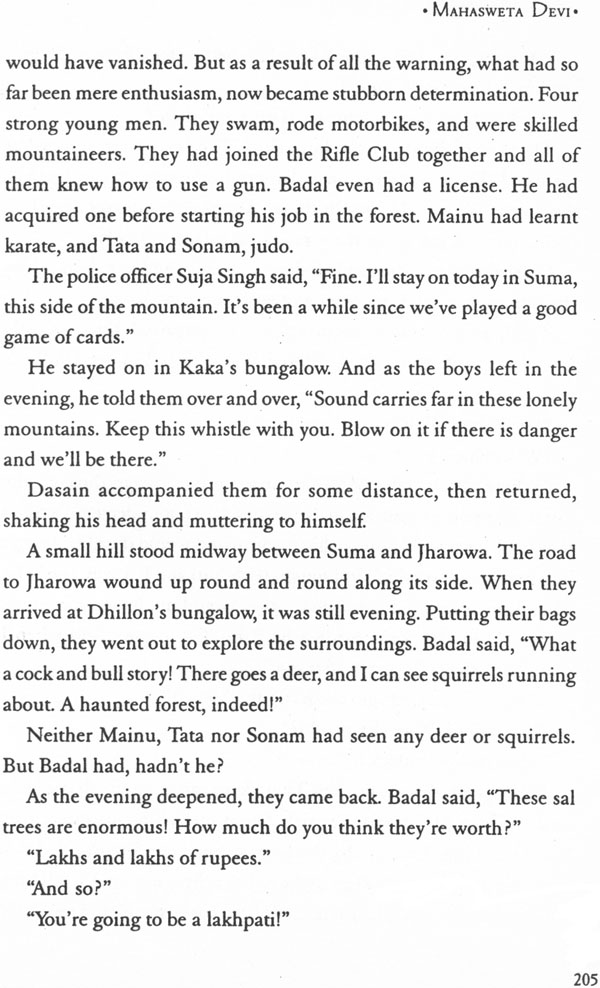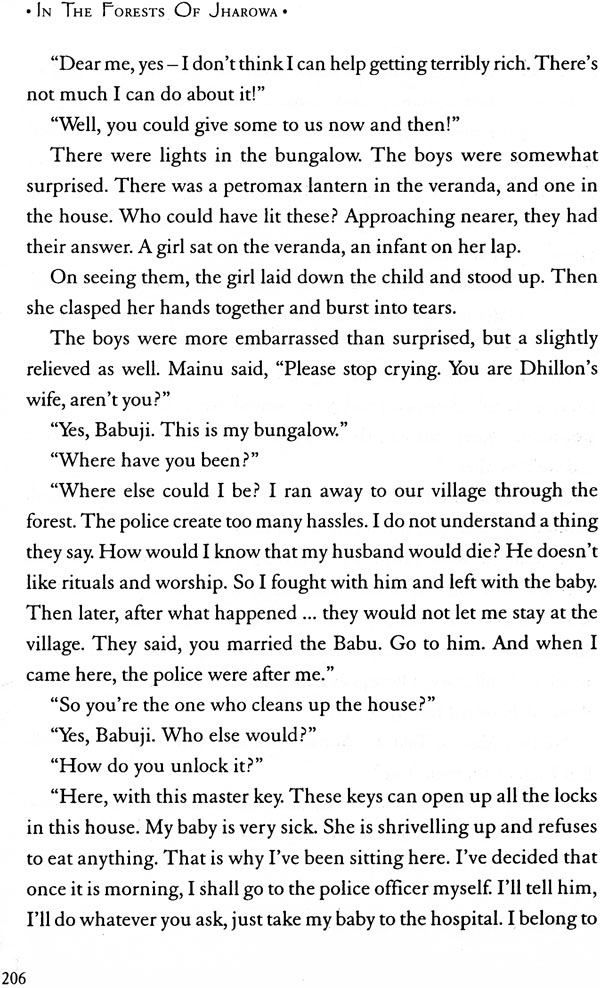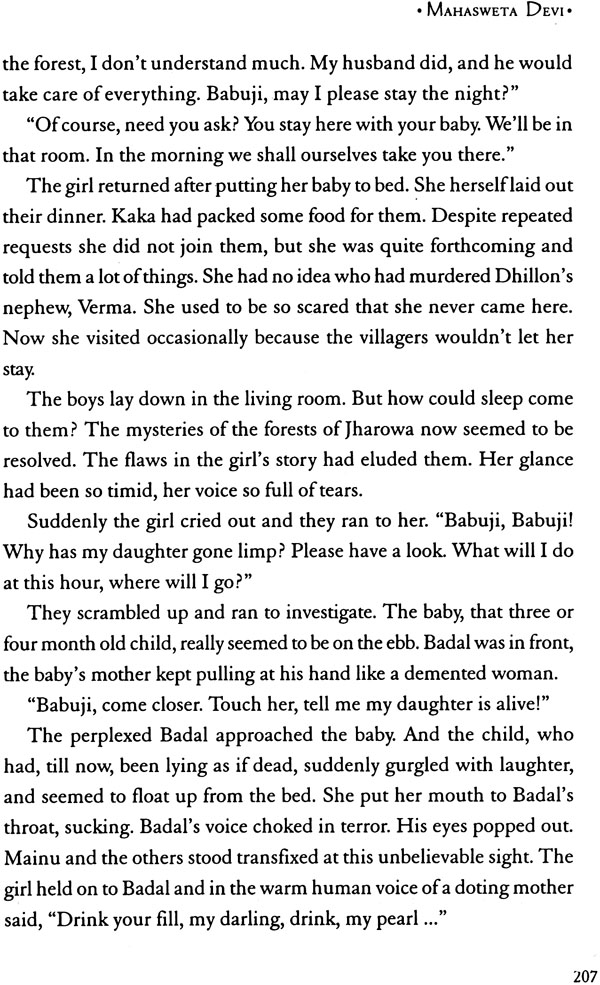
Hauntings (The Darksome Dozen: 13 Stories Form Bangla’s Master storytellers!)
Book Specification
| Item Code: | NAG620 |
| Author: | Suchitra Samanta |
| Publisher: | Katha |
| Language: | English |
| Edition: | 2000 |
| ISBN: | 9788187649014 |
| Pages: | 216 |
| Cover: | Paperback |
| Other Details | 8 inch X 5.5 inch |
| Weight | 260 gm |
Book Description
Back of the Book
13 ghost stories representative of an entire corpus of Bangla literature - they thrill to the supernatural, skilfully treading the thin line between the shadowy recesses of the nether world and the equally inaccessible creations of deluded minds.
These evocative stories feature female protagonists who speak of women’s experiences universally - of rape, love, loneliness, betrayal, social marginality - complex emotions expressed in an idiom that is quintessentially Bengali. These are indeed powerful women who comment and act, from beyond the pale and from within this life, upon the world of the living.
Eerie and elusive, cautionary and compelling - these ghost stories enchant with their whimsy as much as they thrill with their suggestion of menace ...
Introduction
This collection of thirteen stories on ghosts, witches, vampires and other supernatural entities is only a very small selection from a vast opus on the topic from Bengal - an opus that includes folktales, stories for children, stories for more adult readers, as well as renowned literary classics in the genre. My selection of the stories for this anthology was guided by several criteria.
For one, I selected those that were well-written, namely, I looked for fluidity in expression, depth in characterization, complexity of plot, and above all, stories that moved the imagination - where fluidity, depth, complexity and imagination are integrally related. In other words, I omitted stories that, while interesting to read, at best only described some supernatural “event.” I also omitted stories which though well-written were similar in theme to others in the anthology.
I selected these stories primarily because they featured women as protagonists. While I did not start this project with that intention, I discovered that some of the best stories - mostly written by men - portrayed wonderfully the complex emotions that drive women. In this context, those emotions - of jealousy, greed, the hunger for youth, unrequited love, rage, revenge, attachment - were expressed uniquely, variously and powerfully - from beyond the pale of the -everyday. Further, this anthology offers some insight into the gendered aspect of the supernatural in Bengali culture, and therefore “real” women, in Bengali belief. Where the general term bhoot, ghost, also includes in its connotation both “passions” as well as “material substance,” the emotions of the protagonists in these stories find passionate expression by means of their supernatural powers, breaking the silence imposed on them in life. They “speak” with a most corporeal presence, and to effect.
Finally, my own professional interest as a cultural anthropologist inspired a selection that seemed to offer some insight into the Bengali world of the supernatural itself, the cultural beliefs and ideas that underlie the otherworldly entities who are the protagonists of the stories in this anthology. These entities are not the witches and vampires popular in Western literature and cinema - they draw from Bengali conceptions of power beyond the mundane and everyday world. They act upon the world of the living in their own, unique way.
In Bengali belief generally, several types of supernatural entities are traditionally included under the broad rubric of bhoot. Male supernatural entities include the brahmadaitya, the ghost of a brahman and, the purest caste among ghosts; the kandhakata, or headless ghost; the pechobhoot, who wanders around infants; the jakhbhoot, or a young boy buried alive in an underground vault filled with riches, so that his spirits may protect this wealth for legitimate successors; the harabhoot, who lives near ponds and drags unwary swimmers to their death by drowning them; the barulbhoot, the ghost that turns in the wind swirls of a hurricane during the Kalbaishakhi, the fierce thunderstorm of spring; and the nishibhoot, who calls people out at night to die of wandering.
Female entities include the pretini, colloquially, petni, which is the dissatisfied and often malevolent soul of the woman whose last rites were improperly performed; the pishachi, the eater of flesh and drinker of blood, who can fly and take human form; the dakini and yogini, a follower of the divinities Shiva, Kali or Durga, and who haunts cremation grounds. From dakini comes daini or witch, who is in fact a woman in the flesh, possessed of the “evil eye,” with malevolent, life-destroying powers. Then there is the shankhachurni, colloquially, shakchunni, the soul of a woman who has died in the married state and longs to return to it.
In popular tradition, Bengali bhoots depending on who they are, live in desolate places - the forest, the lonely countryside, haunted houses or close to village ponds. So, brahmadaityas, favourites of the god Shiva, live in the wood apple, bel, tree, while shankhachurnis inhabit shaora shrubs and palm trees in rural areas. Contemporary stories, however, often place ghostly entities in the heart of Calcutta. Some bhoots may be as tall as two palm trees, others have arms that may be elongated at will. Still others are skeletal with hollows in the skull for eyes. Those bhoots who are fleshed out are usually dark of skin - though they may also be beautiful and seductive. Bhoots may be one-legged, or have feet that point backwards (a sure way to recognize a bhoot!). Some wear plain white cotton, others may be draped in a gamcha, a cotton towel. Shankhachurnis wear red-bordered white sarees, as married Bengali women do, have long, stork- like legs, flowing hair, and sprinkle cowdung mixed with water before them as they go, to purity the path on which they move. According to popular belief, a shakchunni can use her legs as firewood to keep a stove going, in lieu of the real thing, or stretch her arm to fetch an ingredient for the cooking pot from the next room. Some Bengali bhoots love fish! They trouble the living for fish, have a special predilection for charred fish, machhpora. In fact, they may break the necks of the living to get the fish they so desire. The special time of year for bhoots is the fourteenth day, chaturdashi, of the waning fortnight of the month of Kartik in October-November, the night of amabashya, that darkest night of the new moon.
In the stories in this anthology, some of the authors draw from the repertoire described so briefly and incompletely earlier. However, as works of creative imagination, the protagonists of these stories vary in appearance and in the expression of their powers, and the means by which they communicate their passion - their “stories” are, after all, different! As in any good work of fiction, the author weaves into his creation the rich strands of customs, folkways, religious beliefs and myths that make up her or his own cultural heritage. Like the “real” worlds of social relations, or politics, the world of the supernatural too constitutes its own reality, not to be sceptically judged by an increasingly “scientific” and “rational” mindset. To ask if witches and ghosts are “real” is to miss the point - to those who believe in them, they are most real. Every human culture, says the large body of work on the topic in cultural anthropology, has its own legions of supernatural entities, interacting with or intervening in - for better or for worse - the world of the living. Even that bastion of rationality, the West, has not dispensed with its hobgoblins, fairies, elves and ghosts. Witch covens are becoming increasingly popular, while there has been a recent resurgence of experiences with angels. The Madonna, in the meantime, continues over centuries to dispense her miracles to the true believer. For the Bengalis, then, priding themselves as they do on their rich literary and artistic traditions, on their erudition and sophistication, the supernatural is not to be dismissed as so much superstition. Such entities are integral, and unique, to the cultural world of the Bengali. It is probably a rare Bengali, growing up as a Bengali, who is unfamiliar with what a nishibhoot is, or a daini, a petni or a shakchunni! Again, what makes such entities endure in the cultural imagination are their very real connections with, in this context, women in the world of the living.
The stories in this anthology span more than a century and speak at different levels to the contemporary reader anywhere. For example, on the one hand, they speak universally of the pain of loss, of hungering after youth and beauty, or revenge for rape or betrayal, of greed. So, a long-dead woman communicates a snapshot of the pain of her unrequited love to a sympathetic housewife; a paralyzed woman, craving sexual pleasure, usurps the body of a young and nubile woman; the skeleton of a woman, greedy for gold in life, and murdered for it, haunts her husband; and a philandering husband, killed in an accident, saves his sharp-tongued widow from a con-man. Killed herself in the melee, she joins him in the skylight of their own home in eternal- and one assumes, contentious - reunion.
The stories speak too in the specific voice of a land, its people, their social groups (two of the stories highlight caste differences as integral to the plot), and beliefs. Where the fearsome and powerful, though protective, mother goddess Kali is widely worshipped, it is appropriate that the grievous outrage of a low caste woman raped and murdered by an upper caste man is avenged by the goddess herself-on behalf of all women thus wronged. The disembodied voice of a spinster aunt-rurned-petni, calls by night (as nishibhoots do) for her beloved nephew, unable to sever her attachment - both to him and to the fish he used to bring for her in life. In a similar vein, a wife calls out forever by night to her husband, in eternal question about the wife he married upon her death. A mother fills the heavens, again eternally, with her cries of grief for a child murdered to protect a rapacious landlord’s wealth. In a theme of rebirth and repetition, a seductive and shadowy woman lures, again and again, married men to their deaths. Another such entity evokes Bengal’s Muslim past as she reveals the agony of her enslavement, driving men insane with her silent grief The witch - the author based this story on a “real” witch he knew in rural Bengal- barren, widowed, of low caste and poor, vents her rage upon those who wrong her by drawing out their life force with her evil eye. And, in a very contemporary twist, those who rape the environment are avenged by entities of the forests who appear as seductive illusions, sometimes even as dogs, changing shape as they go, draining the blood from their victims or driving them insane.
Where social institutions silence the voices of so many of the protagonists of the stories in this anthology, it seems that in the minds of their creators - and therefore from within the culture - they find, powerfully, the means to break that silence. If not effectual in life, their special powers, in life or after death, affords (and not too ironically, since their end seems to be achieved!) them an agency, an ability to comment and act upon the world of the living from beyond the pale. The ghosts, witches and vampires of these tales are indeed as “real” as the Bengali women whose lives they draw from.
Contents
| Acknowledgements | |
| Introduction | |
| At Dead of Night | 15 |
| The Hungering Stones | 31 |
| Manihara | 47 |
| Sacrifice by Fire | 69 |
| The Poet’s Lover | 89 |
| In the forest of Bomaiburu | 109 |
| The Witch | 119 |
| Giribala | 139 |
| Nightcall | 147 |
| Chimaera | 157 |
| The Lady of the House | 167 |
| Wedding Night | 177 |
| In the forests of Jharowa | 197 |
| Notes on Contributors |
